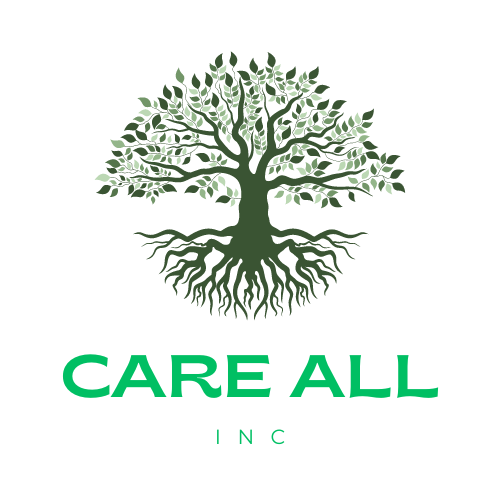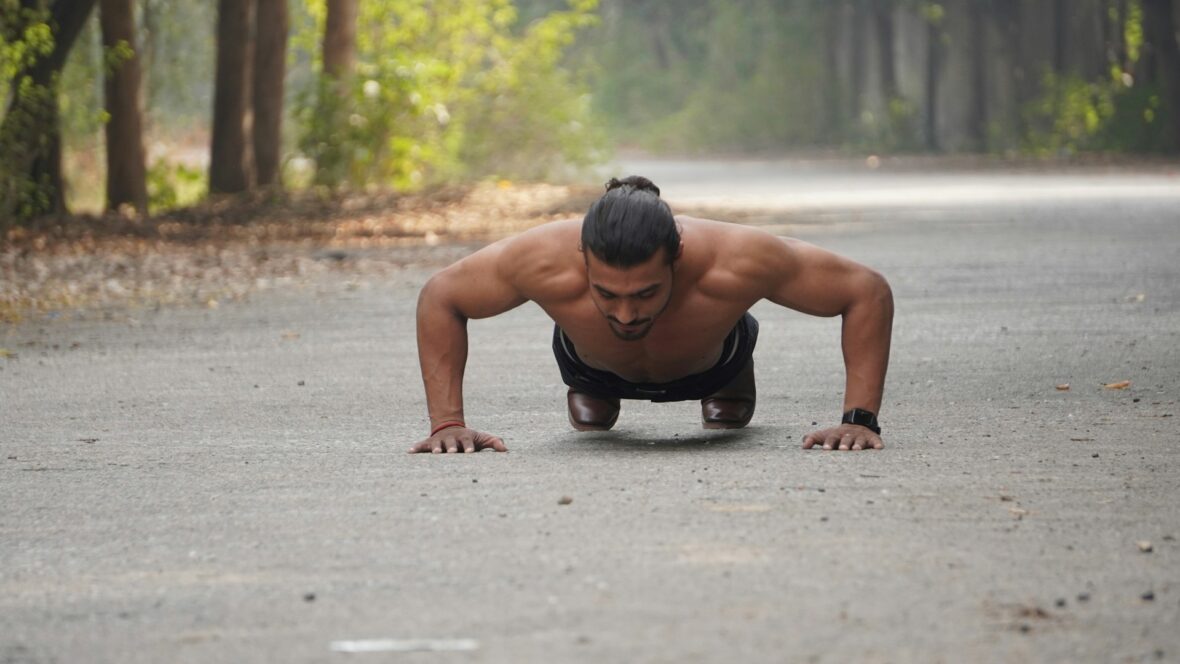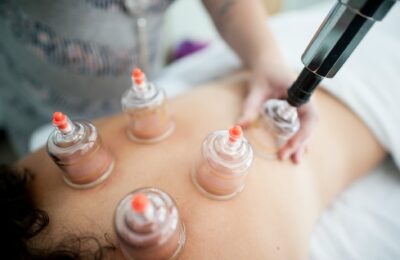Gym memberships can be expensive, and sometimes life gets in the way of our fitness routines. Whether you’re traveling, working long hours, or simply prefer the convenience of exercising at home, bodyweight exercises offer a practical solution for maintaining your fitness goals.
This comprehensive approach to home fitness eliminates the need for expensive equipment while delivering impressive results.
Bodyweight exercises use your own body as resistance, making them accessible to people of all fitness levels. From building strength and improving cardiovascular health to muscle toning and enhancing flexibility, these exercises provide a complete workout experience.
The beauty of bodyweight training lies in its versatility and convenience. You can perform these exercises in your living room, backyard, hotel room, or any space large enough to move freely. This flexibility ensures that your fitness routine remains consistent, regardless of your location or schedule.
Upper Body Strength Development
Push-Up Variations for Complete Chest and Arm Training
Push-ups form the foundation of upper body bodyweight exercises, targeting your chest, shoulders, triceps, and core simultaneously. The standard push-up involves placing your hands shoulder-width apart, maintaining a straight line from head to heels, and lowering your chest to within an inch of the floor before pushing back up.
For beginners, modified push-ups performed on your knees provide the same movement pattern with reduced resistance.
As you progress, diamond push-ups (hands forming a diamond shape) increase the challenge by emphasizing tricep engagement. Wide-grip push-ups shift focus to the chest muscles, while decline push-ups with feet elevated target the upper chest.
Tricep Dips for Arm Definition
Tricep dips effectively target the back of your arms using a sturdy chair, couch, or step. Position your hands on the edge of the surface, extend your legs forward, and lower your body by bending your elbows. This exercise provides excellent muscle toning for the triceps while also engaging your shoulders and chest.
Beginners can bend their knees to reduce the load, while advanced practitioners can elevate their feet on another surface to increase difficulty. Aim for controlled movements, focusing on the negative portion of the exercise for maximum muscle engagement.
Lower Body Power and Muscle Toning
Squat Variations for Leg Strength
Squats rank among the most effective bodyweight exercises for lower-body development. The basic squat involves standing with feet shoulder-width apart, lowering your hips back and down as if sitting in a chair, and returning to the starting position. This movement targets your quadriceps, hamstrings, glutes, and core.
Jump squats add a plyometric element, enhancing cardiovascular benefits while building explosive power. Single-leg pistol squats challenge balance and unilateral strength, though they require significant practice to master. Sumo squats with a wider stance emphasize inner thigh muscles and glutes.
Lunges for Functional Movement
Lunges replicate natural movement patterns while providing excellent muscle toning for the entire lower body. Forward lunges involve stepping into a lunge position, ensuring your front knee stays above your ankle. Reverse lunges reduce knee stress while targeting the same muscle groups.
Walking lunges combine multiple repetitions into a flowing movement, perfect for larger spaces. Lateral lunges target often-neglected muscles on the sides of your legs and hips, improving overall lower body strength and mobility.
Core Stability and Strength
Plank Variations for Deep Core Activation
Planks engage your entire core musculature while improving posture and stability. The standard plank involves maintaining a straight line from head to heels while supported on your forearms and toes. This isometric exercise builds endurance in your deep abdominal muscles.
Side planks target the obliques and improve lateral stability. Dynamic plank variations like plank-to-push-up or plank jacks add movement and cardiovascular challenge. Mountain climbers combine plank position with rapid leg movements, creating an excellent cardio and core combination.
Abdominal Exercises for Complete Core Development
Traditional crunches and sit-ups have their place in home fitness routines, but bicycle crunches provide superior muscle activation. This exercise involves lying on your back and bringing the opposite elbow to your knee in a cycling motion, effectively targeting the entire abdominal region.
Russian twists, performed seated with feet elevated, challenge the obliques and improve rotational strength. Dead bugs, lying on your back with opposite arm and leg extensions, enhance core stability while improving coordination.
Full-Body Integration Workouts
Burpees for Maximum Intensity
Burpees combine multiple movement patterns into one challenging exercise. Starting from standing, drop into a squat, kick back into plank position, perform a push-up, jump feet back to squat, and explode upward with arms overhead. This exercise elevates heart rate while engaging virtually every muscle group.
Modifications include eliminating the push-up or jump for beginners, while advanced practitioners can add a tuck jump at the top for increased difficulty. Burpees provide excellent cardiovascular conditioning while building strength and endurance.
Bear Crawls for Coordination and Strength
Bear crawls challenge coordination while building strength throughout your body. Starting on hands and knees with knees slightly off the ground, move forward by advancing the opposite hand and foot simultaneously. This exercise improves shoulder stability, core strength, and overall coordination.
Variations include backward bear crawls, lateral movements, and bear crawl push-ups. The exercise can be performed in place or across distances, making it adaptable to any space constraint.
Creating Your Home Fitness Routine
Weekly Programming Structure
Effective home fitness requires consistent programming that balances intensity with recovery. A three-day-per-week schedule allows adequate recovery while maintaining progress. Alternate between upper body focus, lower body emphasis, and full-body integration days.
Each session should include a warm-up consisting of dynamic movements like arm circles, leg swings, and bodyweight squats. The main workout can follow a circuit format, performing each exercise for 30-45 seconds with 15-second rest periods. Cool-down stretching helps maintain flexibility and reduce muscle soreness.
Progressive Overload Without Equipment
Progressive overload drives continued improvement in bodyweight training. Increase difficulty by adding repetitions, extending hold times, or progressing to more challenging exercise variations. Time-based challenges, such as performing maximum repetitions in a set timeframe, provide measurable progress markers.
Recording your workouts helps track improvements and maintain motivation. Simple metrics like total repetitions, exercise duration, or circuit completion times provide concrete evidence of progress.
Maximizing Results Through Consistency
Nutrition and Recovery Considerations
Home fitness success depends on more than just exercise selection. Proper nutrition supports muscle recovery and energy levels for consistent workouts. Adequate protein intake helps maintain and build lean muscle mass, while proper hydration supports performance and recovery.
Sleep quality significantly impacts exercise performance and recovery. Aim for 7-9 hours of quality sleep to support your fitness goals. Stress management through meditation, deep breathing, or other relaxation techniques can improve both workout quality and recovery.
Long-term Success Strategies
Consistency beats intensity for long-term fitness success. Short, regular workouts prove more effective than sporadic, lengthy sessions. Building exercise into your daily routine increases adherence and makes fitness a sustainable lifestyle habit.
Variety prevents boredom and ensures balanced muscle development. Rotate between different exercise combinations and challenge levels to maintain engagement and continued progress. Setting realistic goals and celebrating small victories helps maintain motivation throughout your fitness journey.
Your Path Forward to Home Fitness Success
Bodyweight exercises provide a complete fitness solution that requires nothing more than your body and determination. These movements build strength, improve cardiovascular health, and enhance muscle toning without the need for expensive equipment or gym memberships.
Start with basic exercises and focus on proper form before progressing to more challenging variations. Consistency in your routine will yield better results than sporadic, intense sessions. Remember that fitness is a journey, not a destination, and every workout brings you closer to your goals.
Begin with just 15-20 minutes three times per week, gradually increasing duration and intensity as your fitness improves. Your living room can become your personal training studio, and your commitment to regular exercise will transform not just your physical health, but your overall quality of life.






